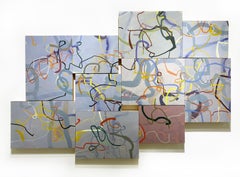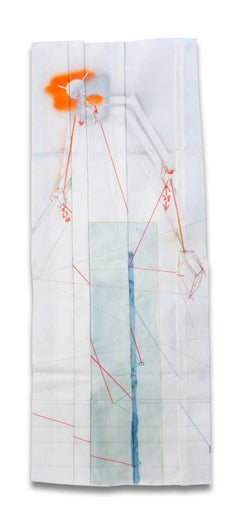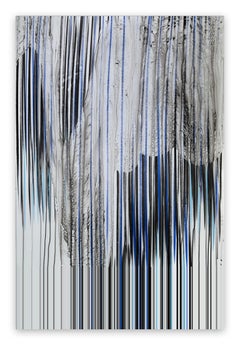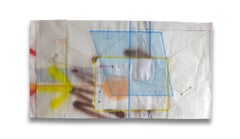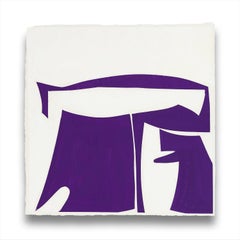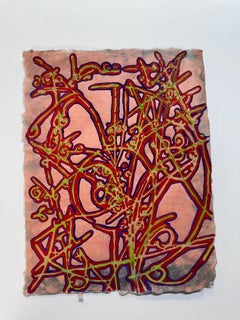Tri-State Area - Abstract Drawings and Watercolors
2010s Abstract Tri-State Area - Abstract Drawings and Watercolors
Canvas, Oil, Graphite
2010s Abstract Tri-State Area - Abstract Drawings and Watercolors
Paper, Ink, Spray Paint, Watercolor, Pencil
2010s Abstract Tri-State Area - Abstract Drawings and Watercolors
Mylar, Pencil
2010s Abstract Tri-State Area - Abstract Drawings and Watercolors
Paper, Ink, Spray Paint, Watercolor, Pencil
2010s Hard-Edge Tri-State Area - Abstract Drawings and Watercolors
Paper, Gouache
2010s Abstract Tri-State Area - Abstract Drawings and Watercolors
Acrylic, Handmade Paper
2010s Abstract Tri-State Area - Abstract Drawings and Watercolors
Paper, Watercolor
2010s Abstract Expressionist Tri-State Area - Abstract Drawings and Watercolors
Mylar, Pencil, Pigment
2010s Abstract Tri-State Area - Abstract Drawings and Watercolors
Paper, Acrylic
2010s Abstract Tri-State Area - Abstract Drawings and Watercolors
Paper, Acrylic
Early 2000s Abstract Expressionist Tri-State Area - Abstract Drawings and Watercolors
Mylar, Pencil, Pigment
2010s Abstract Tri-State Area - Abstract Drawings and Watercolors
Watercolor
1970s Abstract Tri-State Area - Abstract Drawings and Watercolors
Paper, Pastel
1970s Abstract Tri-State Area - Abstract Drawings and Watercolors
Paper, Pastel
2010s Abstract Tri-State Area - Abstract Drawings and Watercolors
Mylar, Pencil
2010s Hard-Edge Tri-State Area - Abstract Drawings and Watercolors
Paper, Gouache
2010s Abstract Expressionist Tri-State Area - Abstract Drawings and Watercolors
Paper, Acrylic, Watercolor
2010s Abstract Tri-State Area - Abstract Drawings and Watercolors
Paper, Ink, Mixed Media, Spray Paint, Watercolor, Pencil
2010s Abstract Tri-State Area - Abstract Drawings and Watercolors
Paper, Ink, Spray Paint, Watercolor, Pencil
2010s Contemporary Tri-State Area - Abstract Drawings and Watercolors
Mixed Media, Paper, Pastel
2010s Hard-Edge Tri-State Area - Abstract Drawings and Watercolors
Paper, Gouache
2010s Abstract Tri-State Area - Abstract Drawings and Watercolors
Paper, Ink, Mixed Media, Spray Paint, Watercolor, Pencil
2010s Contemporary Tri-State Area - Abstract Drawings and Watercolors
Ink, Wax, Handmade Paper
2010s Abstract Tri-State Area - Abstract Drawings and Watercolors
Mylar, Pencil, Pigment
1970s Abstract Expressionist Tri-State Area - Abstract Drawings and Watercolors
Watercolor
2010s Abstract Tri-State Area - Abstract Drawings and Watercolors
Paper, Ink
2010s Abstract Expressionist Tri-State Area - Abstract Drawings and Watercolors
Paper, Pencil
1970s Minimalist Tri-State Area - Abstract Drawings and Watercolors
Pencil
2010s Contemporary Tri-State Area - Abstract Drawings and Watercolors
Paper, Permanent Marker
1980s Abstract Expressionist Tri-State Area - Abstract Drawings and Watercolors
Oil Pastel
1980s Abstract Expressionist Tri-State Area - Abstract Drawings and Watercolors
Paper, Oil Pastel
2010s Abstract Tri-State Area - Abstract Drawings and Watercolors
Acrylic, Handmade Paper
2010s Abstract Tri-State Area - Abstract Drawings and Watercolors
Paper, Ink
1970s Feminist Tri-State Area - Abstract Drawings and Watercolors
Paper, Acrylic
2010s Contemporary Tri-State Area - Abstract Drawings and Watercolors
Paper, Permanent Marker
2010s Abstract Tri-State Area - Abstract Drawings and Watercolors
Archival Paper, Pencil
1970s Feminist Tri-State Area - Abstract Drawings and Watercolors
Paper, Acrylic
2010s Contemporary Tri-State Area - Abstract Drawings and Watercolors
Charcoal
1970s Feminist Tri-State Area - Abstract Drawings and Watercolors
Paper, Acrylic
2010s Contemporary Tri-State Area - Abstract Drawings and Watercolors
Paper, Permanent Marker
1970s Pop Art Tri-State Area - Abstract Drawings and Watercolors
Watercolor, Paper
1910s Tri-State Area - Abstract Drawings and Watercolors
Paper, Watercolor
Early 2000s Abstract Tri-State Area - Abstract Drawings and Watercolors
Paper, Mixed Media
2010s Tri-State Area - Abstract Drawings and Watercolors
Charcoal, Pastel, Pencil
2010s Abstract Tri-State Area - Abstract Drawings and Watercolors
Watercolor
21st Century and Contemporary Contemporary Tri-State Area - Abstract Drawings and Watercolors
Ink, Watercolor, Handmade Paper
Late 20th Century Contemporary Tri-State Area - Abstract Drawings and Watercolors
Glass, Ink, Mixed Media, Watercolor, Gouache, Handmade Paper, Pencil
2010s Abstract Tri-State Area - Abstract Drawings and Watercolors
Wax, Watercolor, Wood Panel, Pigment, Mica
2010s Abstract Tri-State Area - Abstract Drawings and Watercolors
Wax, Watercolor, Wood Panel, Pigment, Mica
2010s Abstract Tri-State Area - Abstract Drawings and Watercolors
Wax, Watercolor, Wood Panel, Pigment, Mica
2010s Abstract Tri-State Area - Abstract Drawings and Watercolors
Canvas, Oil Pastel, Ink, Acrylic
2010s Contemporary Tri-State Area - Abstract Drawings and Watercolors
Ink, Wax, Handmade Paper
2010s Abstract Tri-State Area - Abstract Drawings and Watercolors
Wax, Watercolor, Wood Panel, Pigment, Mica
2010s Abstract Expressionist Tri-State Area - Abstract Drawings and Watercolors
Paper, Acrylic
2010s Abstract Tri-State Area - Abstract Drawings and Watercolors
Watercolor, Archival Paper
2010s Abstract Tri-State Area - Abstract Drawings and Watercolors
Paper, Acrylic
2010s Abstract Tri-State Area - Abstract Drawings and Watercolors
Paper, Acrylic
2010s Abstract Tri-State Area - Abstract Drawings and Watercolors
Watercolor, Canvas, Acrylic
2010s Abstract Tri-State Area - Abstract Drawings and Watercolors
Paper, Acrylic
2010s Abstract Tri-State Area - Abstract Drawings and Watercolors
Watercolor
